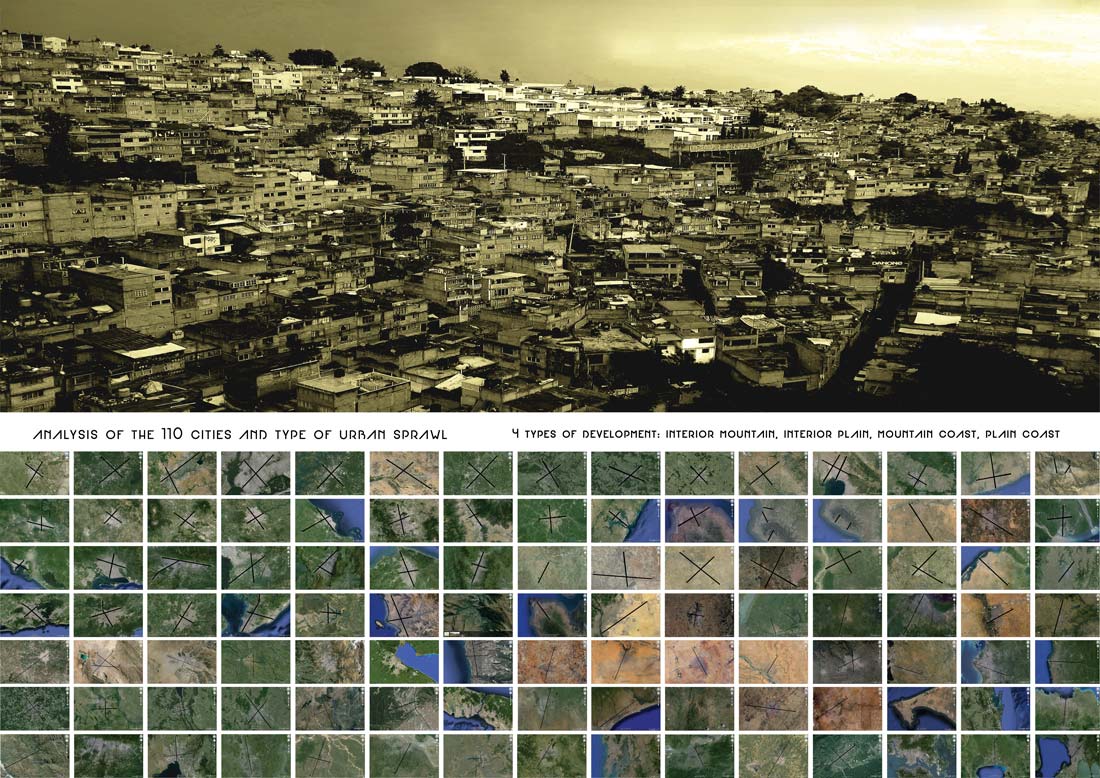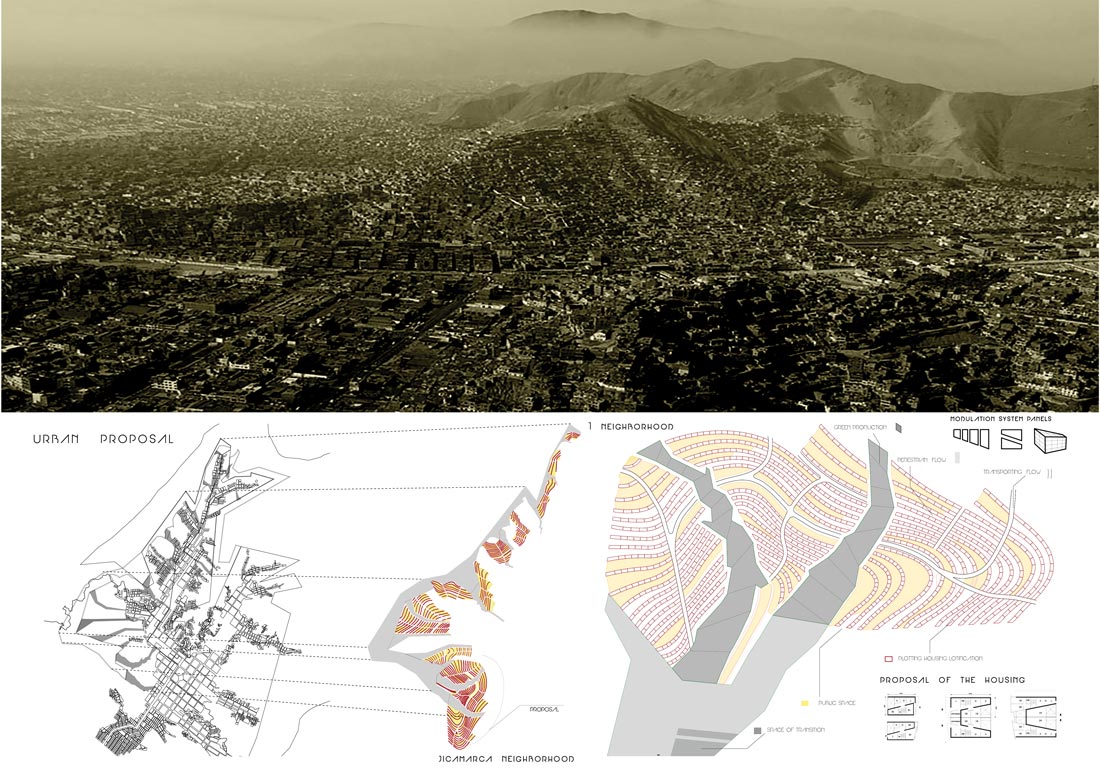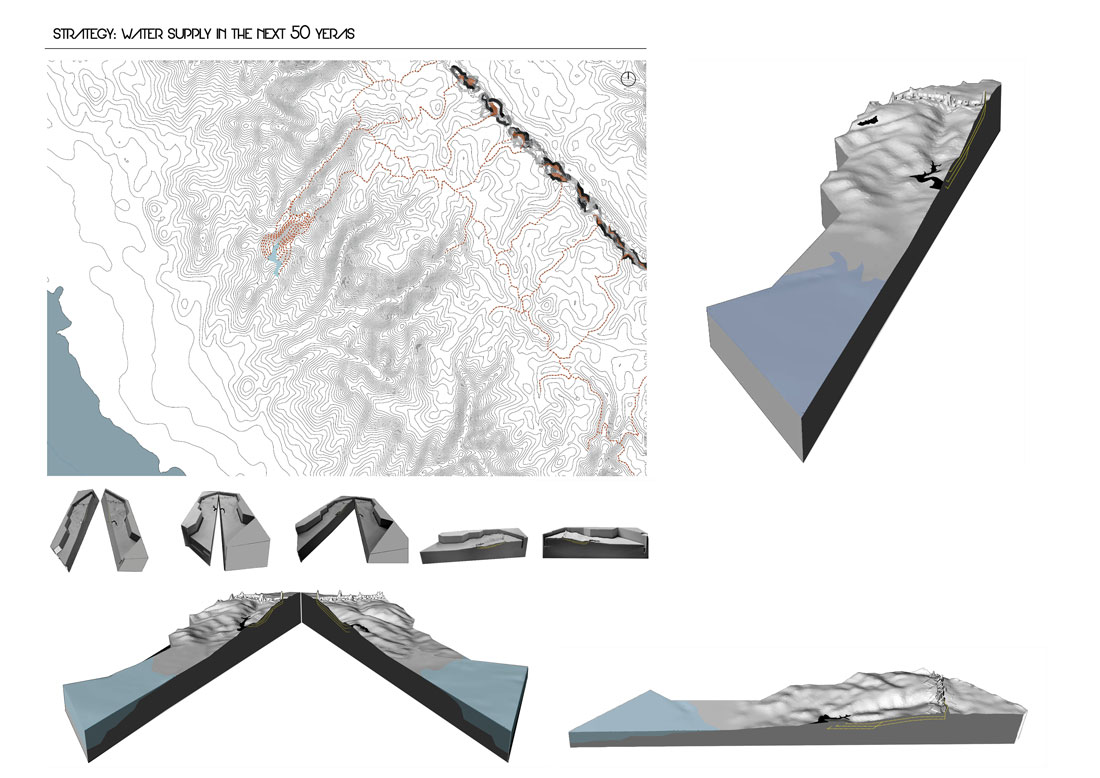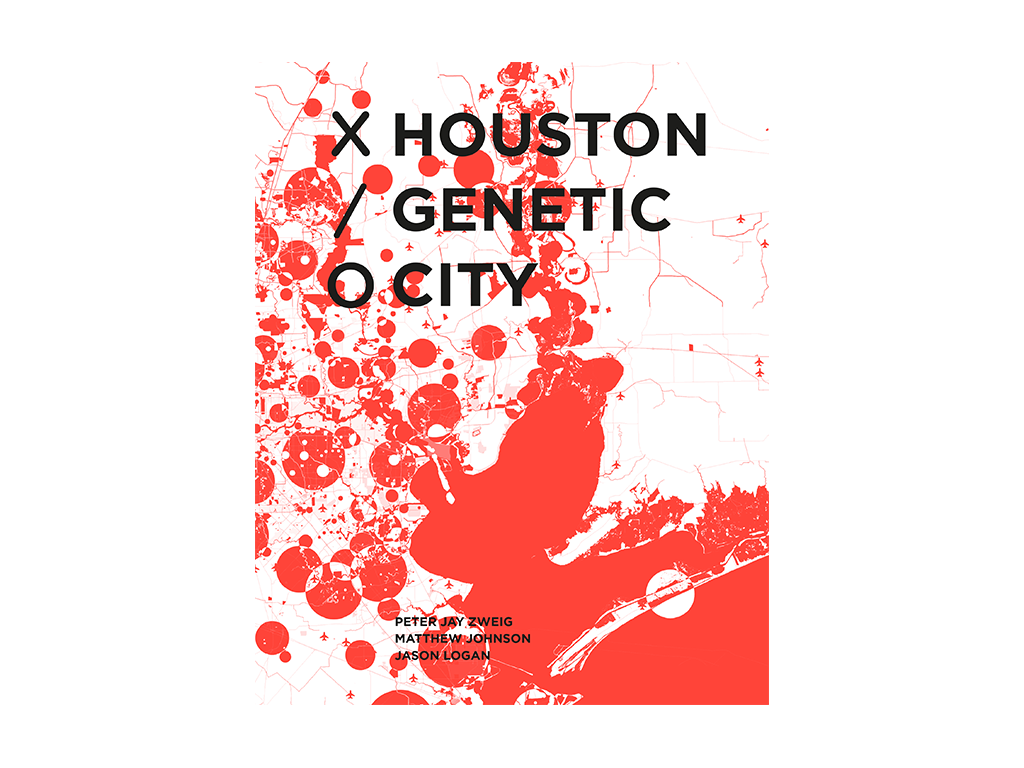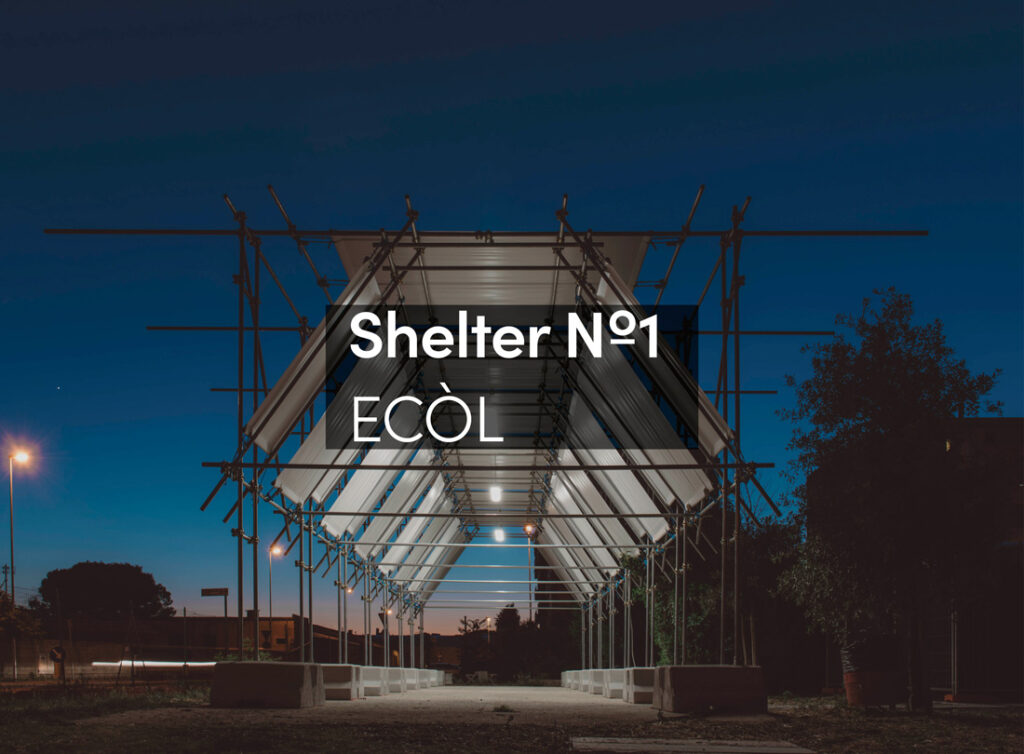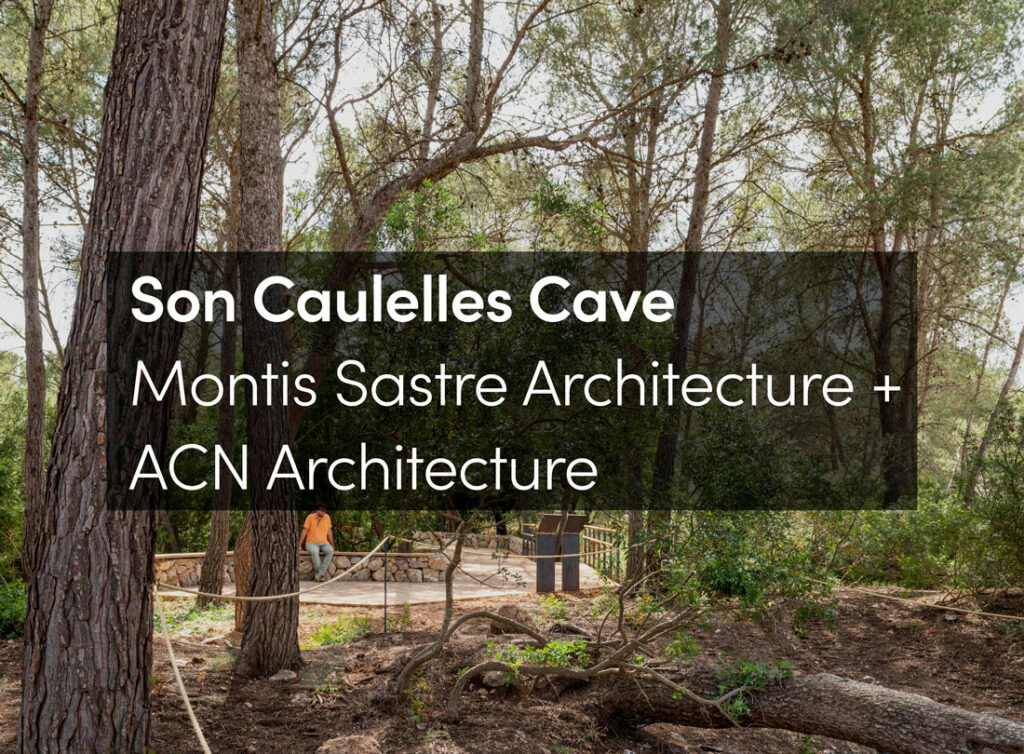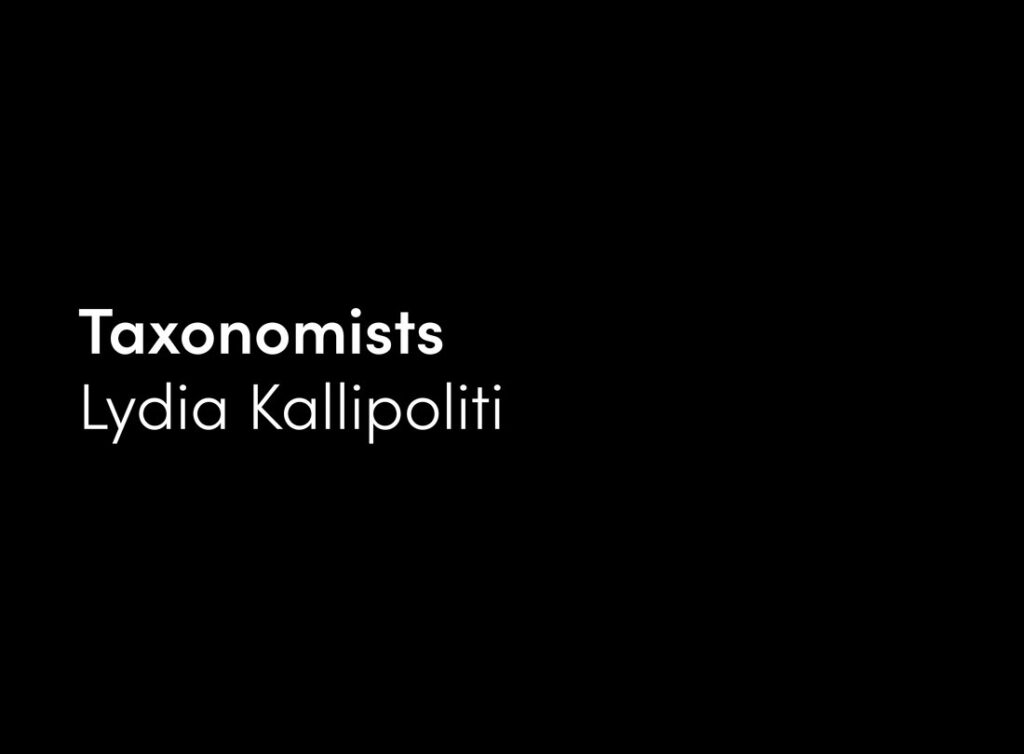The construction of informal housing has a global demand of approximately 43.98% (UN Data – World Bank). The majority of informal housing is located in sectors or areas with fewer economic resources and development processes. This is how it expands, develops and forms our cities worldwide, creating and defining models and types.
Since time immemorial, informal housing – buildings that do not conform to the parameters of zoning or construction techniques based on summation – was the housing method used by many people with limited economic resources; this method generated an uncontrolled expansion of our cities. This approach will not change; on the contrary, it will continue to grow within cities that are becoming increasingly urbanized. This phenomena is occurring worldwide with different degrees of complexity, scale and territorial characteristics.
ANALYSIS OF THE GLOBAL SITUATION
The registered information about global urbanization starts at the beginning of the 19th century, when the urban population represented 2% of the world population (Source: World Urbanization Project). In the 1950s, the percentage of urbanization in cities was 29.1%. Estimates indicate that in 2030 this percentage will be 60.8%. Therefore, first a dictionary will be compiled (supported by sources of global research such as UN HABITAT, WORLD DATA, UNICEF, THE WORLD REVIEW and THE WORLD BANK) as:
An investigation to identify the existing major agglomerations of poor neighborhoods, subsequently defined according to four terms: megalopolis > 15,000 persons; metropolis > 10,000 persons; intermediate cities > 5,000 persons; small cities > 1,000 persons.
This is followed by a study of the type of urban development in poor neighborhoods in these cities (which are majority). Four types of development are characterized : Interior Mountain (the urban extension is between mountains and the closest side is < 25 km), Interior Plain (the side of the interior urban extension is > 25 km), Mountain Coast (the urban expansion is between the coast and the mountains, where the shortest side of its expansion is > 25 km) and Coastal Plain (the side of the urban expansion between the sea and its first obstacle is > 25 km). The research concludes with an investigation into the type of climate and its influence on the development of these neighborhoods, ultimately grouping them by temperature and similar characteristics in four categories: warm weather, temperate weather, cold temperate weather, cold weather. We will define this information using a data table, and an overlapping of maps will be realized to put the information in a global context.
Data from UN HABITAT shows that 80% of the population of Latin America and the Caribbean lives in cities, making it the most urbanized area in the world (surpassing Asia: 53%, India: 47%, and Africa: 50%).
METROPOLITAN ANALYSIS
We conclude that the area of Latin America is one of the most urbanized areas in the world, which contains poor neighborhoods with warm climates and higher concentrations of population. The countries inside this area will be divided into two groups according to specific characteristics, similar categories and the type of development pointed out above: Family Groups and Sibling Groups, within four sub-areas :
Note:
Family Group: This is a group of countries that share characteristics on a macro scale.
Sibling Group: This is a group of cities that share similar characteristics on a micro-scale or a more detailed definition in each neighborhood.
FAMILY GROUP / SIBLING GROUP
Colombia, Barranquilla: 0-5
Venezuela, Miranda: 0-5
Perú, Lambayeque: 0-5
Perú, Lima: 5-10
Venezuela, Caracas: 5-10
Mexico, Guanajuato: 5-10
Brasil, Rio de Janeiro: 10-15
Colombia, Bogotá: 10-15
Argentina, Rosario: 10-15
Argentina, Buenos Aires: 15-morE
Brasil, Sao Paolo: 15-more
Mexico, C. de Mexico: 15-more
SPECIFIC ANALYSIS OF THE INFORMAL HOUSING AND VULNERABILITIES
This brings us to the conclusion that we will focus in an intermediate Family Group, which has between 5 and 10 million inhabitants. This choice is made because this type of group has all the qualities of a small Family Group (0 to 5 million inhabitants) along with the majority of the qualities and complexity of a large Family Group.
In addition to being predominant because of its large presence in the Latin American area, while belonging to a Mountain family of urban growth (Interior Mountain and Coastal Mountain), it is a territory of major urban agglomeration of the types of urban developments previously analyzed.
CONCLUSIONS
We are currently living in a more urbanized world, a fact that will be intensified in the future, and this will bring opportunities and disadvantages, specifically in poor neighbourhoods, because of the fast and uncontrolled expansion which often occurs in conditions that are not ready to welcome new inhabitants.
Poor neighbourhoods are a worldwide consequence which we have seen in a wide range of cases in this investigation. Looking at cities where poor neighbourhoods are more concentrated, common factors have been found in order to deduce patterns and relationships between them to find a solution to resolve this problem.
This solution would be possible by organizing these neighbourhoods into patterns of urban growth, population, slum concentrations, and climate. In conclusion, focusing on Latin America, we can organize them into four Family Groups. Within each Family Group, there are three Sibling Groups, which are the cities with the highest concentration of poor neighborhoods. Each city has an urban pattern. If we zoom into each neighbourhood, there are several factors that appear: informal housing is not a problem in the analysed case of Jicamarca, but the economic income of the neighborhood is a problem. In this case, people have to travel four hours to reach any workplace. Something important is to consolidate the inherent qualities of the place: a peasant village. Analyzing the qualities of the place, we find that one of the main skills of its inhabitants is pig breeding and agriculture, but they are currently informal activites and it do not have any restrictions or quality assurance in place.
After studying these places of informal breeding, we propose six places located strategically in Annexes 22 and 08 Jicamarca. The place is like a valley and its main characteristic is that it is constantly growing from the bottom up. An urban proposal is made to organize urban growth control. Limits for the site are drawn to be used as the guidelines for this urban proposal, where each family is allocated an area or plot of land to ensure tidy growth.
The slums should be recognized as part of the urban fabric. Despite all of the actions that have been undertaken, they will remain present and they are a part of our society. We should highlight that each sector, area or zone has a “vocation of place” with active elements that are productive and functional. Within each of these places, there lies a solution. We have to be aware of these problems in order to generate solutions.
